

Max Davies
2025 BYD Shark 6 review
5 Days Ago
The entry-level Ford Puma impresses with a strong equipment list and a punchy, engaging drive experience. We'd go as far to call it the dynamic benchmark.
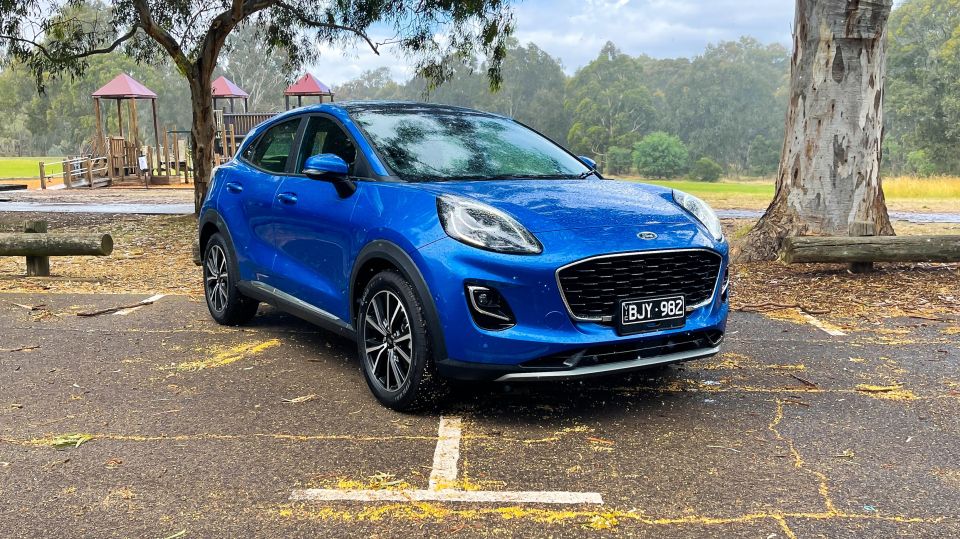
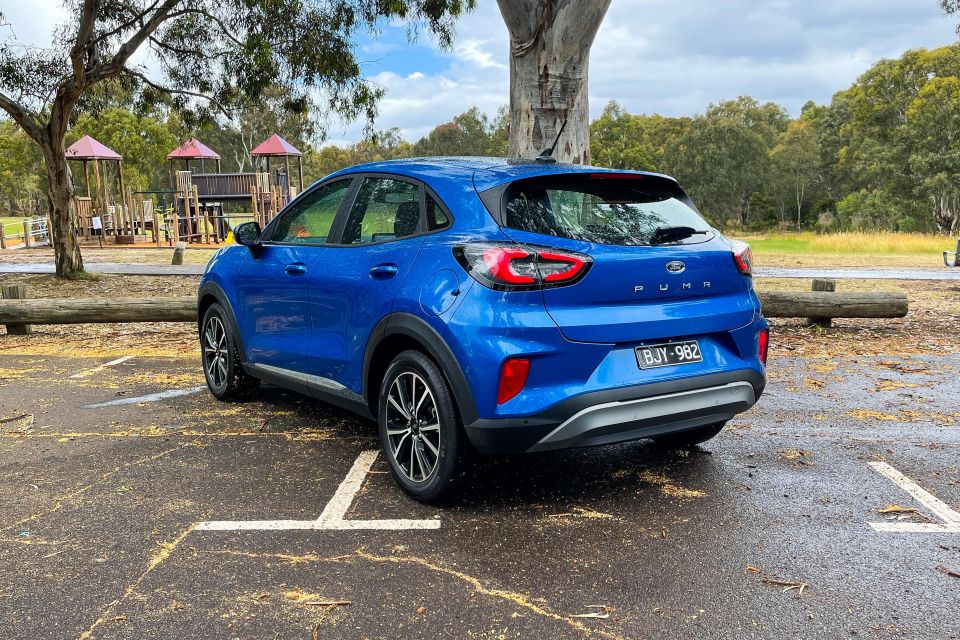

Marketplace Editor
New from
$29,990
excl. on-roads

Marketplace Editor
New from
$29,990
excl. on-roads


Marketplace Editor
New from
$29,990
excl. on-roads

Marketplace Editor
New from
$29,990
excl. on-roads
Quickly see how this car stacks up against its competition. Select any benchmark to see more details.
Where expert car reviews meet expert car buying – CarExpert gives you trusted advice, personalised service and real savings on your next new car.
Ford has been a bit slow to the party in the small and medium SUV segments, despite these segments proving lucrative in recent years.
In 2020 the Blue Oval decided to put its best foot firmly forward in both arenas, releasing the overhauled Escape mid-sizer and this, the all-new Puma.
Yes, the little guppy-faced Ford crossover revives the name worn by a Fiesta-based sports car of the 1990s, but think of it more as an evolution with the times. Back then people liked small, sporty cars. Now, they want small, sporty SUVs.
Like its same-named forebear, the Puma is also based on the latest Fiesta – though we only get the hatchback in hot hatch ST form these days. If you really want a normal Fiesta, this is about as close as you’re going to get.
We’ve now tested the mid-spec ST-Line and flagship ST-Line V at CarExpert, so here we’re taking a look at the most affordable variant in the line-up – simply named Puma FWD.
At a little over $30,000 on the road the base Puma is bang on the pricing sweet spot relative to both the Light and Small SUV segments, of which it technically competes in the former. Is it the pick of the range? Let’s find out.

The 2021 Ford Puma FWD is listed from $29,990 before on-road costs. At launch Ford announced national drive-away pricing of $31,990 for the base model, and at the time of writing an 2020 example can be had from $31,490 drive-away.
Within both the Light and Small SUV segments, the ‘entry-level’ Puma is priced and specified more in line with mid-spec variants in rival line-ups – we will get more into standard features in a bit.
Relative to its rivals, the Puma is definitely priced on the higher side of the class in entry-level guise, though keep in mind it’s sourced from Europe (Romania) and packs quite a bit of kit despite its base positioning.
Key rivals include the top-selling Mazda CX-3 sTouring ($31,090 list with auto), the Volkswagen T-Cross 85TSI Life ($29,990 drive-away), as well as the Skoda Kamiq 85TSI ($29,990 drive-away with DSG).
You’re also within reach of several models from the Small SUV class, including the Kia Seltos Sport ($30,790 drive-away), Hyundai Kona Elite 2.0 2WD ($30,600 list), Mazda CX-30 G20 Pure ($29,990 list), Nissan Qashqai ST ($30,290 list with an auto) and the Toyota C-HR GXL 2WD ($30,915 list).
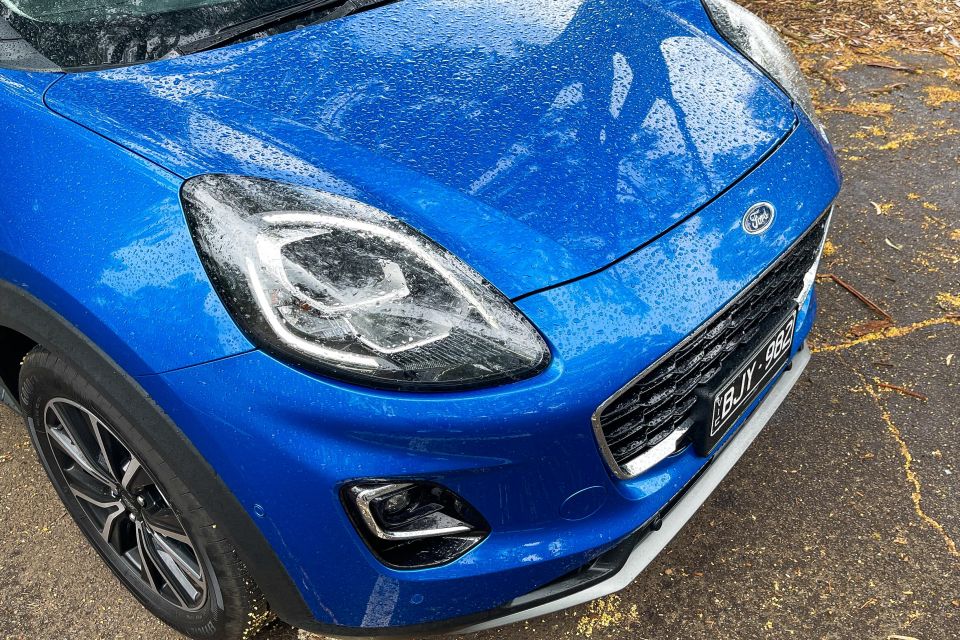
For an entry-level car, the Puma FWD’s features list is rather healthy.
Standard equipment includes:
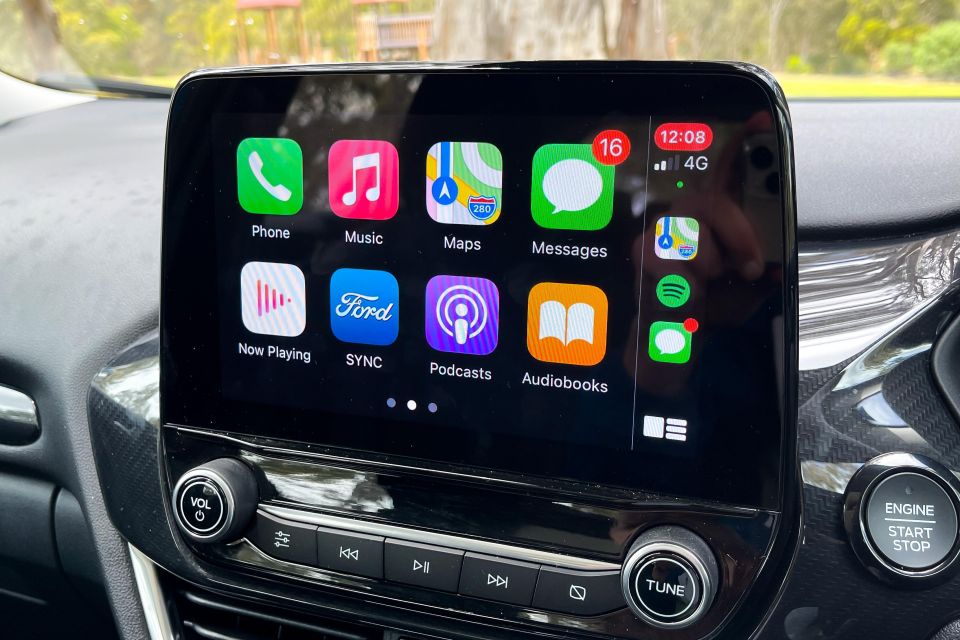
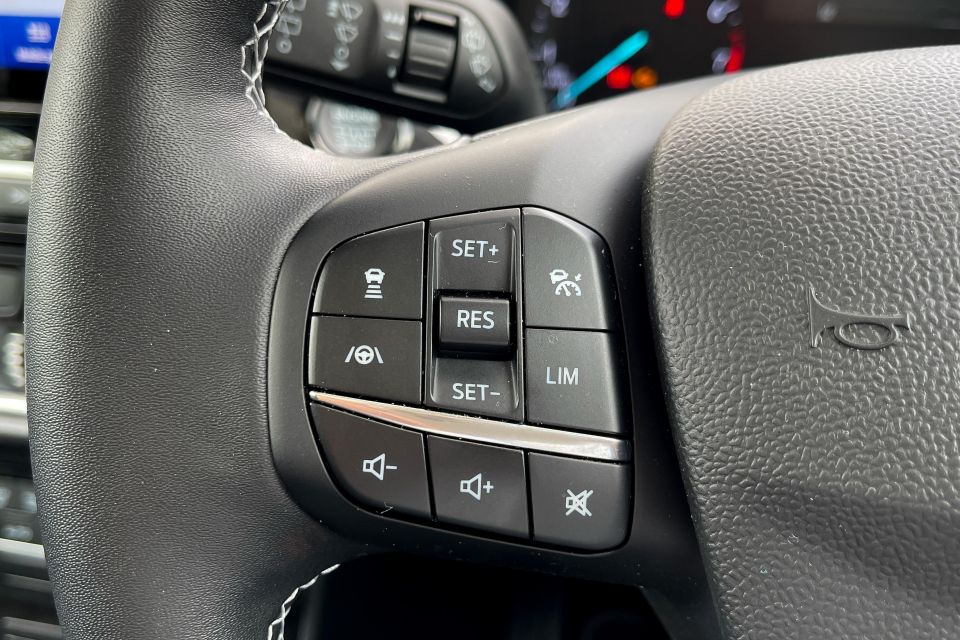
Our tester was also decked out with the optional Park Pack ($1500), which adds:
It was also fitted with a powered panoramic sunroof ($2000) and the eye-catching Desert Island Blue prestige paint ($650).
So, as-tested the vehicle you see here is $34,140 list, or $36,140 drive-away. Again, that’s on the higher side of the segment when you consider the top-spec versions of most rivals are between $35,000 and $40,000.
With that said, the Park Pack brings the full gamut of high-end driver assistance technologies which aren’t offered on numerous competitors, and personally I’d ditch the panoramic sunroof and its flimsy manual shade for the optional electric tailgate ($750) and contrast black roof paint ($500).
It’s also worth noting the base Puma is the sole variant that gets contrasting plastic bumpers and skid plate-style treatments in the front and rear bumpers. If you’re after the tougher SUV look, this may be the one for you.
Despite being based on Europe’s Titanium specification, the Australian-market Puma FWD misses out on the option of Ford’s swish new 12.3-inch digital instrument cluster that’s standard on the ST-Line and ST-Line V.
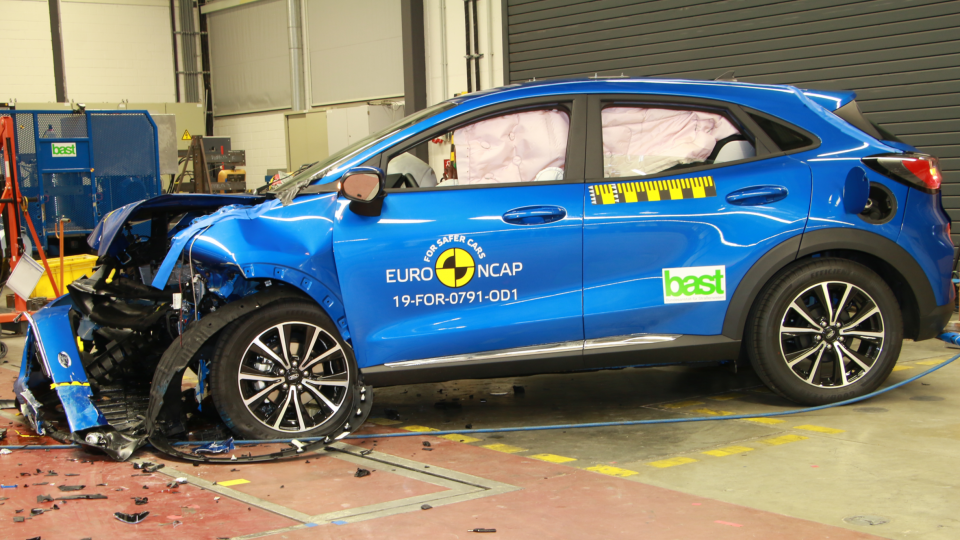
The Ford Puma wears a 2019-stamped five-star ANCAP safety rating based on tests conducted by Euro NCAP.
In terms of category scores, the Puma managed 94 per cent for adult occupant protection, 86 per cent for child occupant protection, 77 per cent for vulnerable road users and 74 per cent for safety assist. This rating applies to all Puma variants sold in Australia and New Zealand.
According to the test results, the Puma scored highly all round, with the only real dent in its armour being ‘Marginal’ protection of the driver’s chest in the frontal offset test.
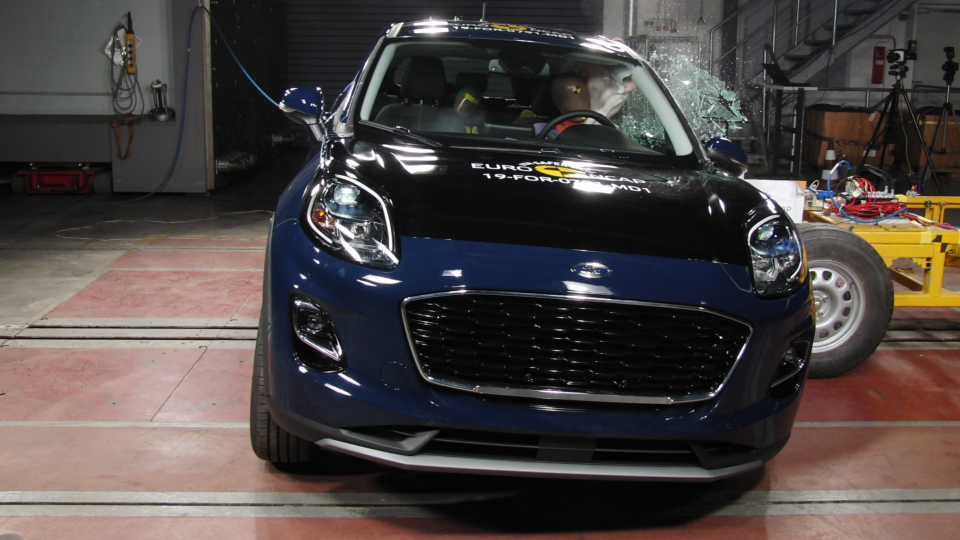
Dual frontal, side chest-protecting and side head-protecting (curtain) airbags are standard, as are autonomous emergency braking (City, Interurban and Vulnerable Road User), and lane-keep assist with lane departure warning.
As noted earlier, our test vehicle’s optional park pack adds several high-end assistance systems including adaptive cruise control with stop/go and lane centring, as well as surround parking sensors with automated park assist, and blind-spot monitoring with rear cross-traffic assist.
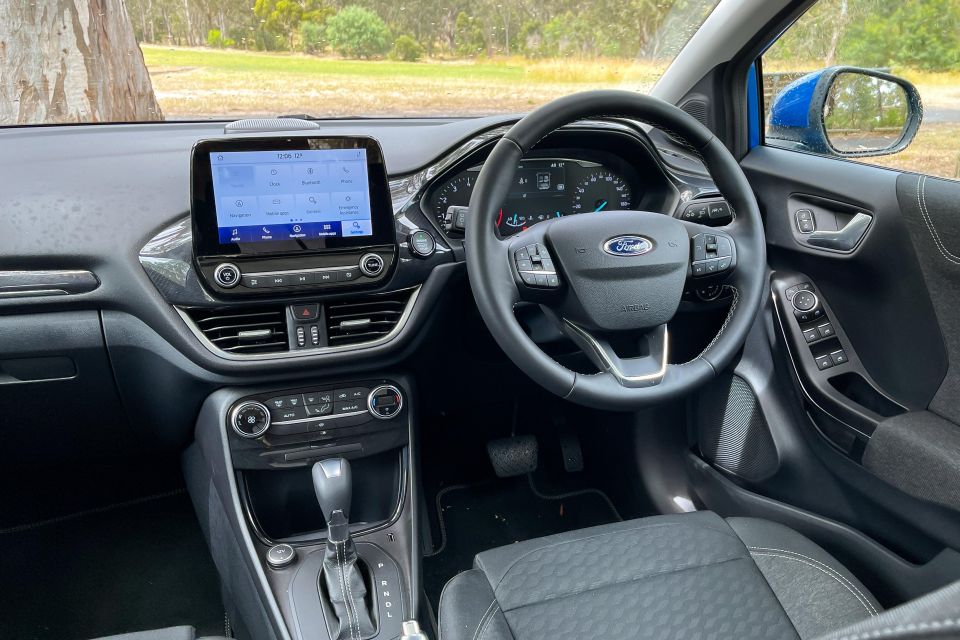
If you’ve ever sat in a Focus, Fiesta or the new Escape, the Puma’s cabin will feel very familiar. Further to that, it’s one of the better presented cockpits in the compact SUV segments.
As is becoming a consistent theme in modern vehicles the layout is simple with a focus on reducing physical switchgear, though the essential functions like volume and climate control still get actual buttons.
Love it or hate it, the 8.0-inch touchscreen running Ford’s smart Sync 3 infotainment interface sits proudly atop the dash like a floating tablet, also featuring native satellite navigation with real-time traffic updates, as well as Apple CarPlay/Android Auto and the FordPass Connect embedded modem.
The latter means you can hook up your vehicle to a smartphone app to get real-time information like driving range and service notifications, as well as perform remote functions using your phone like vehicle lock/unlock, remote start and vehicle locator.

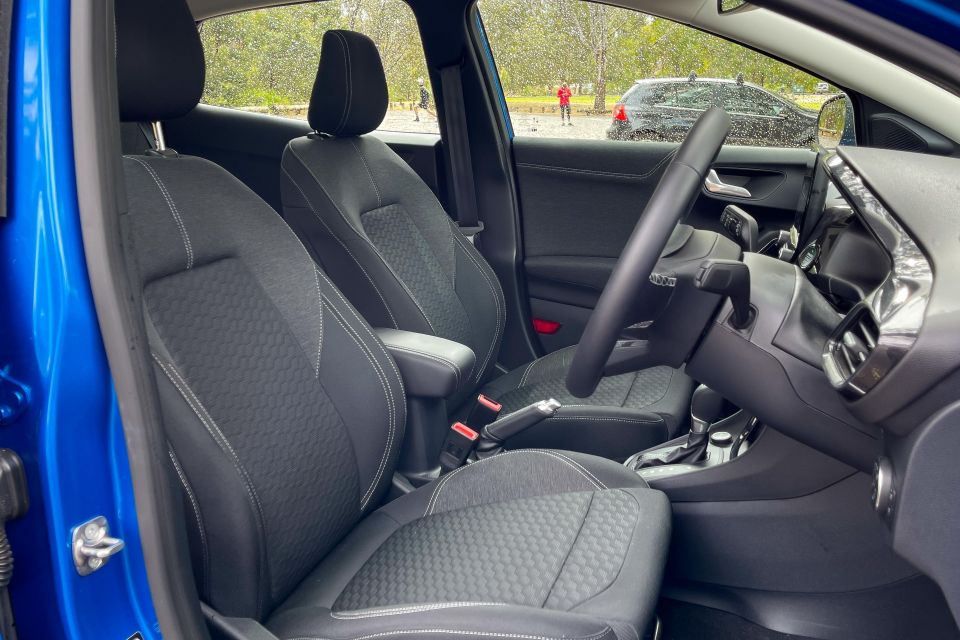
Beyond the connected functions, Sync 3 remains one of my favourite infotainment systems thanks to its user-friendly interface and snappy responses. It’s well featured with both inbuilt navigation, smartphone mirroring and digital radio, and the menus and functions don’t take long to learn.
The standard sound system offers good, clear sound quality for those who like to pump the beats or listen to podcasts on the move, and we didn’t experience any glitches with the software when using Apple CarPlay.
In terms of space and ambience, the Puma’s first row is a nice place to spend time.
The seats are comfortable and supportive, the ergonomics are logical and user-friendly, and space up front is quite good even with the optional panoramic roof as fitted to our test vehicle.
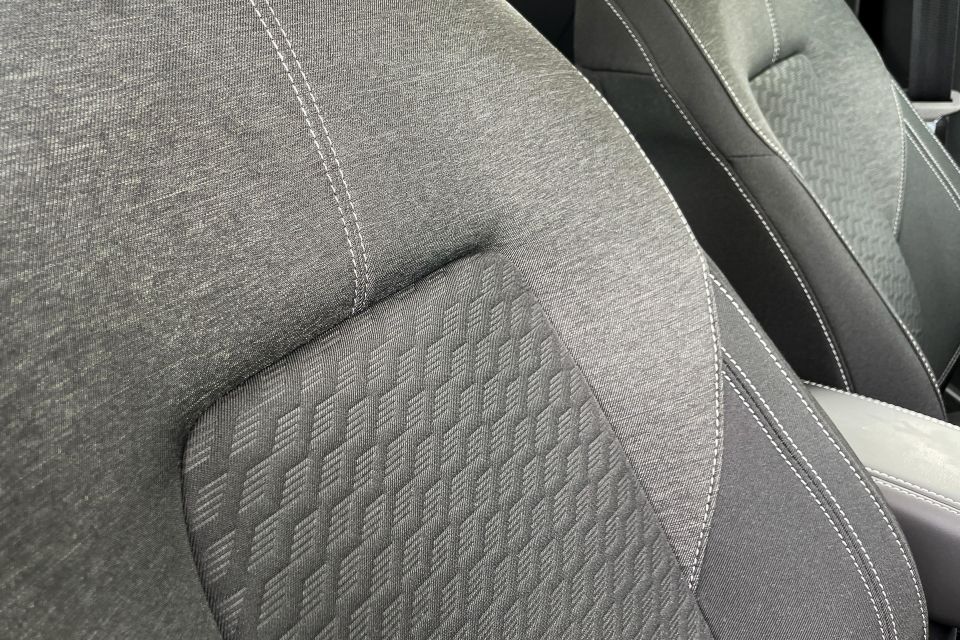

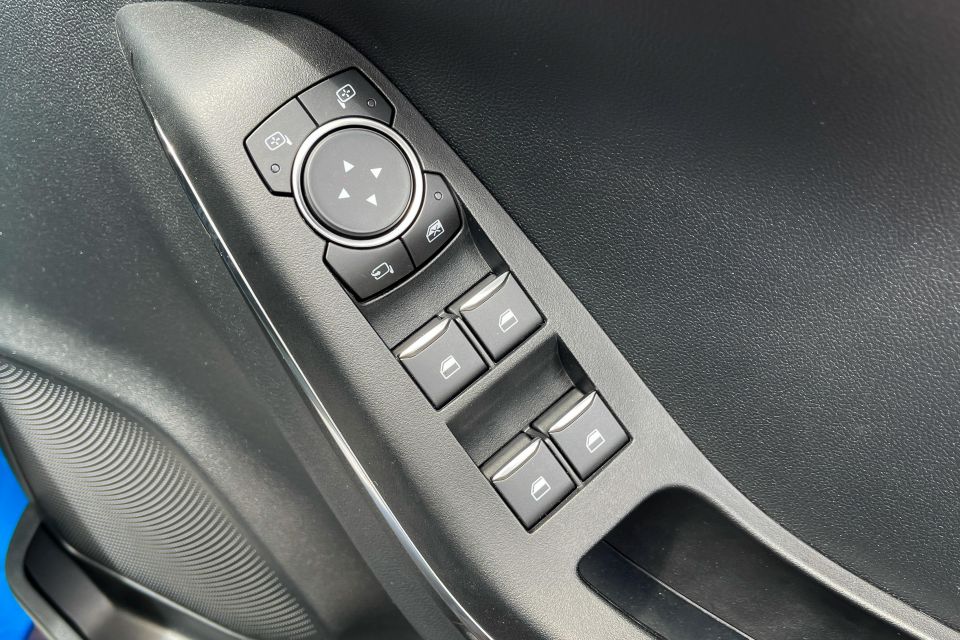
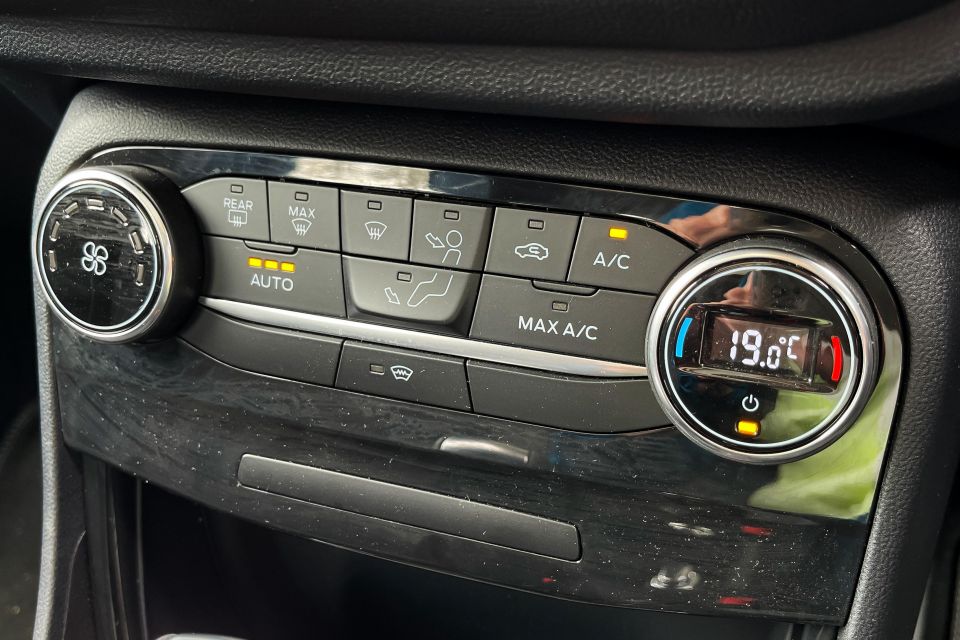
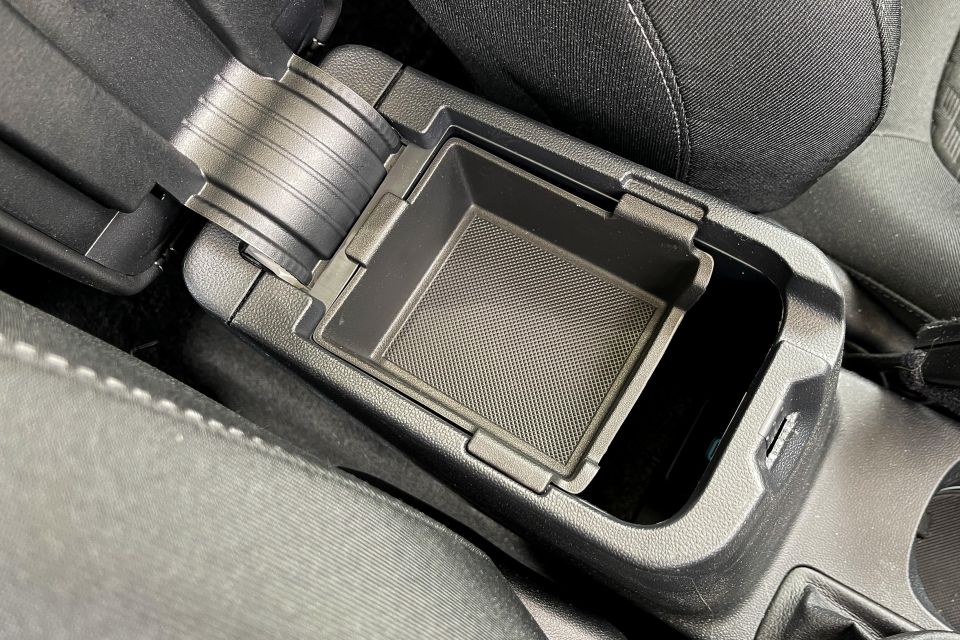
Material quality is decent, with soft-touch plastic on the dashboard and padded fabric inserts on the doors, though there’s plenty of harder, scratchier plastics everywhere else. It won’t be challenging the Mazda CX-30 for cabin tactility, but it’s much nicer than the Fisher Price bits used in the Volkswagen T-Cross.
I personally am not a huge fan of the standard dials in Ford’s latest products either. The flat, simple gauges with small TFT display in the middle are clean and easy to read, but they look a little cheap and can’t match the flair of the digital gauges offered higher up in the range. This is nit-picking, though.
Moving into the second row, the Puma is much more ‘Light’ than ‘Small’. Behind an above-average size driver knee and legroom in the second row is quite tight, and there’s little in the way of back-seat amenities – there’s no vents or fold-down centre armrest with cupholders.
There are map nets on the front seatbacks and a little cubby to store small loose items behind the centre console, as well as ISOFIX mounts on the outboard positions. If you carry people in the back seat often that aren’t children, you might want something bigger.
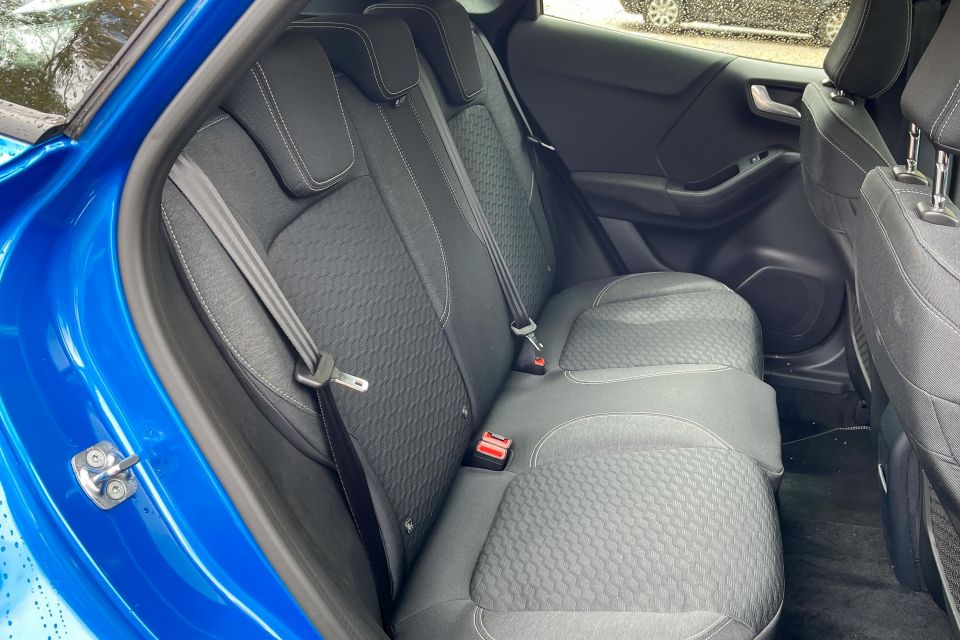
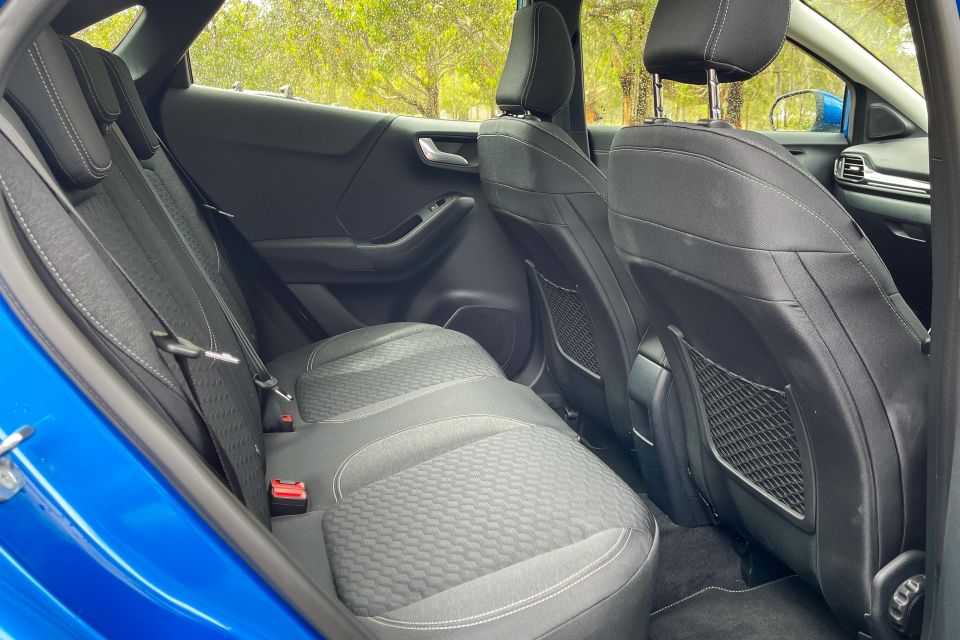
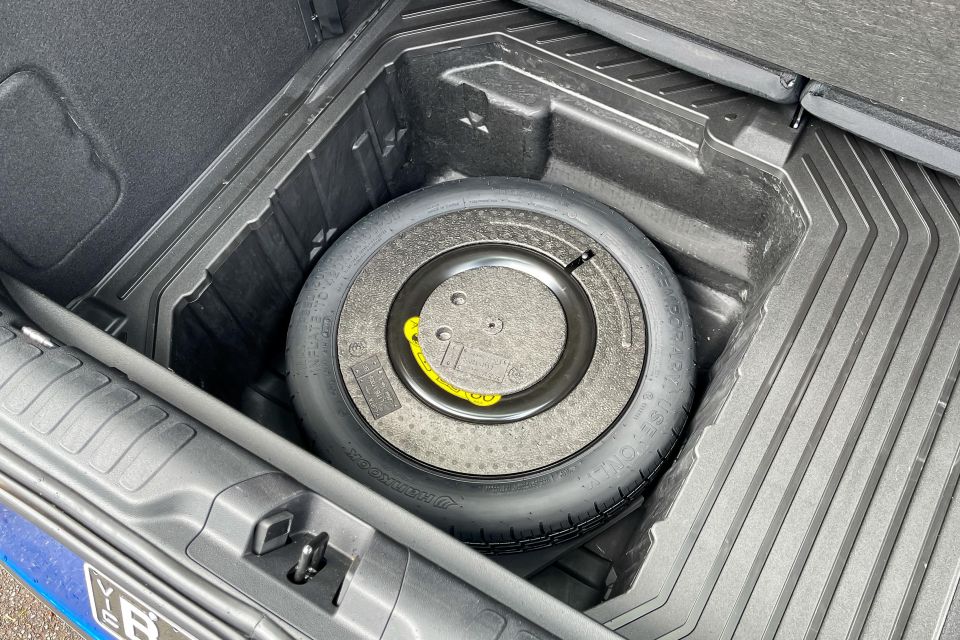

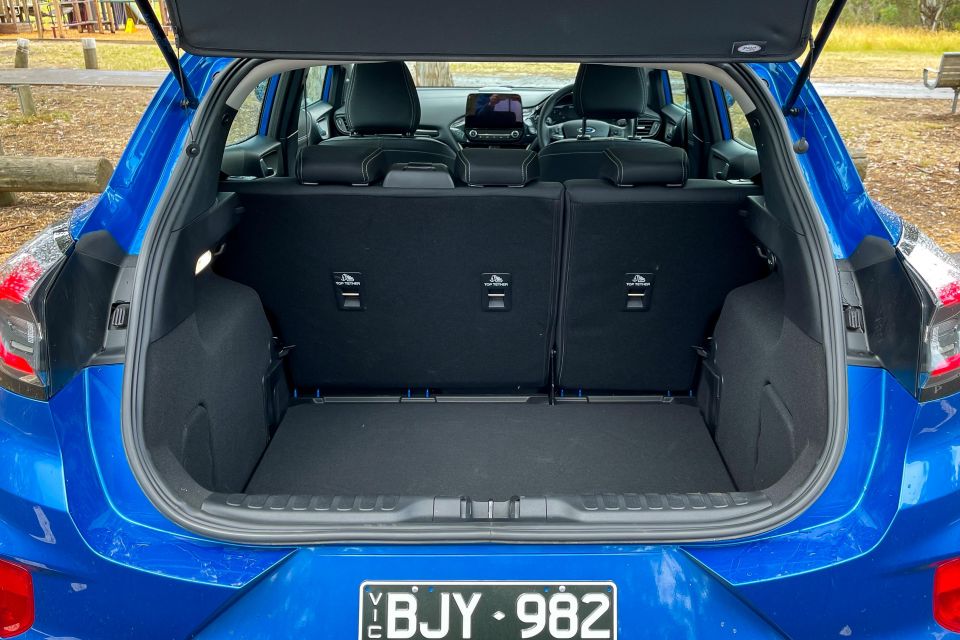
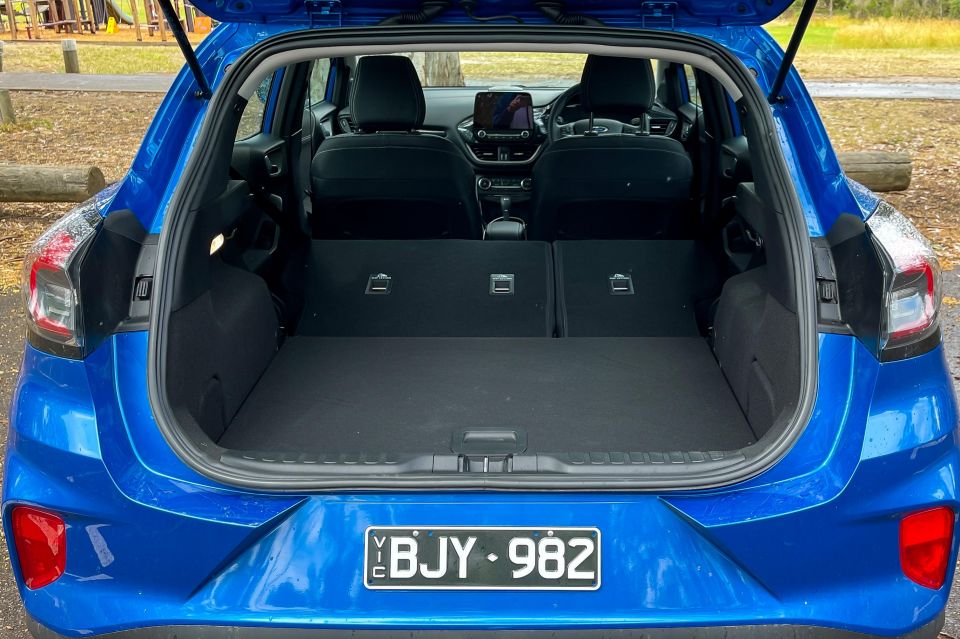
Further back again, the Puma has a surprisingly accommodating boot, which measures 410L with the second row in place – though this includes the 34L storage box under the boot floor. Fold the rear seats down and the space opens up to 1170L.
Australian models miss out on the 80L ‘Megabox’ under-floor storage area due to the fitment of a space-saver spare wheel, however we discovered if you remove the spare wheel from its holding place, you basically have the Megabox there.
The Puma’s load-lugging capacity easily eclipses that of the Mazda CX-3 (264L/1174L) in five-seat form, and is competitive with the boxier T-Cross (385L/1281L). King of the Light SUV boot race is the Skoda Kamiq, with its 400L/1395L capacities.
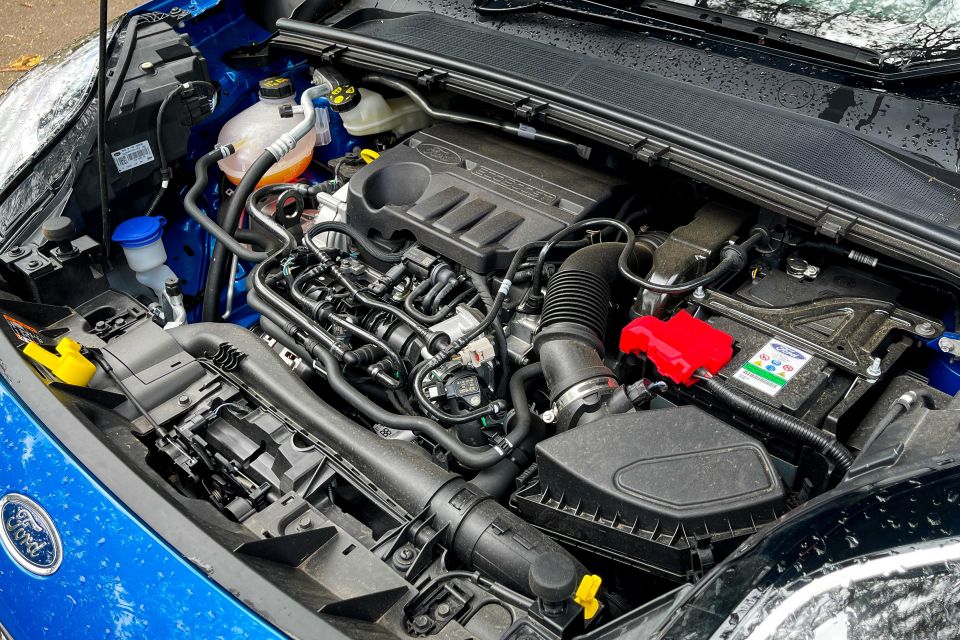
Powering the entire Puma range in Australia is a 1.0-litre three-cylinder turbocharged ‘EcoBoost’ petrol engine sans mild-hybrid technology, mated to a seven-speed dual-clutch automatic driving the front wheels.
Outputs are quoted at 92kW (@6000rpm) and 170Nm (@1500-4500rpm), and fuel consumption is rated at 5.2L/100km on the combined cycle. The fuel tank capacity is 42 litres. We managed mid-sixes in mixed driving, which is up on the claim but still pretty impressive.
While those numbers may sound a little meek on paper, the Puma’s little engine only has to shift 1288kg (kerb). We’ll talk about driving performance in the next section.
Overseas, the Puma is available with 48V mild-hybrid versions of the same 1.0-litre engine, and a 1.5-litre turbo-diesel will be sold in select markets too. Europe also gets a hot Puma ST running the same 147kW 1.5-litre turbo triple as the Fiesta ST – alas, its manual-only driveline makes it less appealing for the Australian arm and won’t be offered for the foreseeable future.
Like many rivals in the Light and Small SUV segments, the Puma is front-wheel drive only, too.
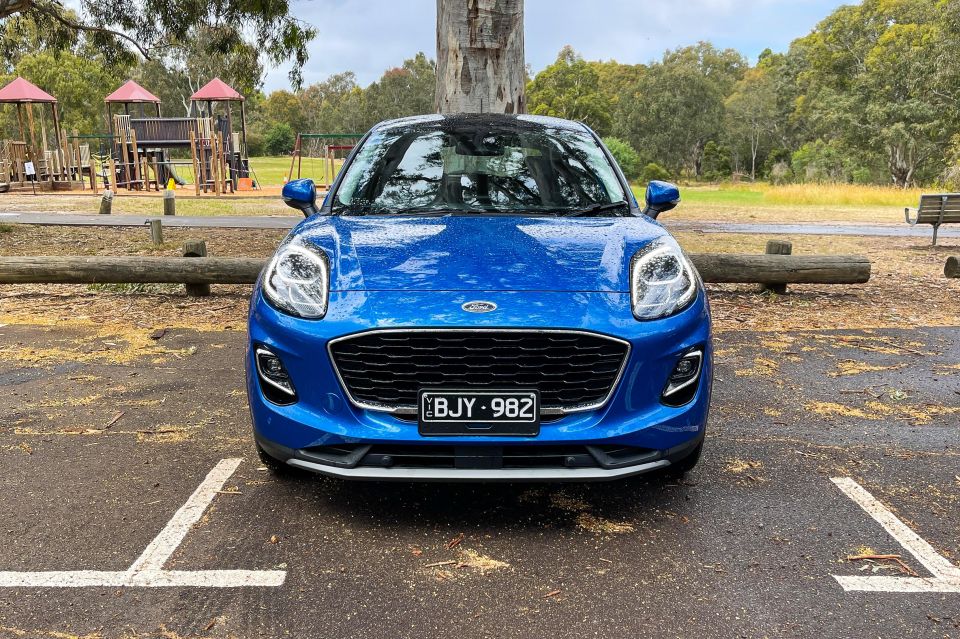
Ford’s compact vehicles have long been lauded for their fun-to-drive factor, and I was pleasantly surprised with just how engaging the Puma is behind the wheel compared to other compact crossovers.
I’ll be the first to admit I tend to scoff at most light and small SUVs as they generally are inferior to their passenger car equivalents in terms of value, dynamics and performance. The Puma already has the advantage that the standard Fiesta isn’t sold here, so I can’t really use it as a reference point.
What I can use as a reference is the vast range of competing models I’ve spent time in during my career.
Most vehicles in this class feel clumsy and underpowered, but the Puma is probably the sharpest and most car-like SUV I’ve ever driven.
Its compact dimensions shrinks around you, the quick steering rack and eager chassis make it feel super sharp and sporty whether you’re in town or driving a winding country road, and the torquey three-cylinder turbo is a delight.
The Puma will likely spend most of its life in the urban jungle, and its also here where it makes the most mundane of commutes a bit of fun.
Off the line the dual-clutch auto hooks up so similarly to a conventional torque converter transmission you’d be forgiven for not thinking it’s a DCT, and the 1.0-litre engine is really punchy from launch right through the mid-range.
It’s made better by the thrummy, gravelly three-cylinder engine note the Puma sends through the cabin under acceleration – it’s a different sound to what you’re likely used to and it’s rather charming.
Another important aspect of the urban driving experience is the ride, and despite erring on the side of firm the base Puma does a good job at isolating occupants from the various lumps and bumps of city streets without much fuss.
It probably helps the Puma FWD has smaller 17-inch alloys and chubby 55-series tyres compared to the ST-Line V we tested recently, and also the fact it doesn’t fit sports suspension like the ST-Line and ST-Line V.
Refinement is competitive for the segment, too, with good insulation from road and wind noise.
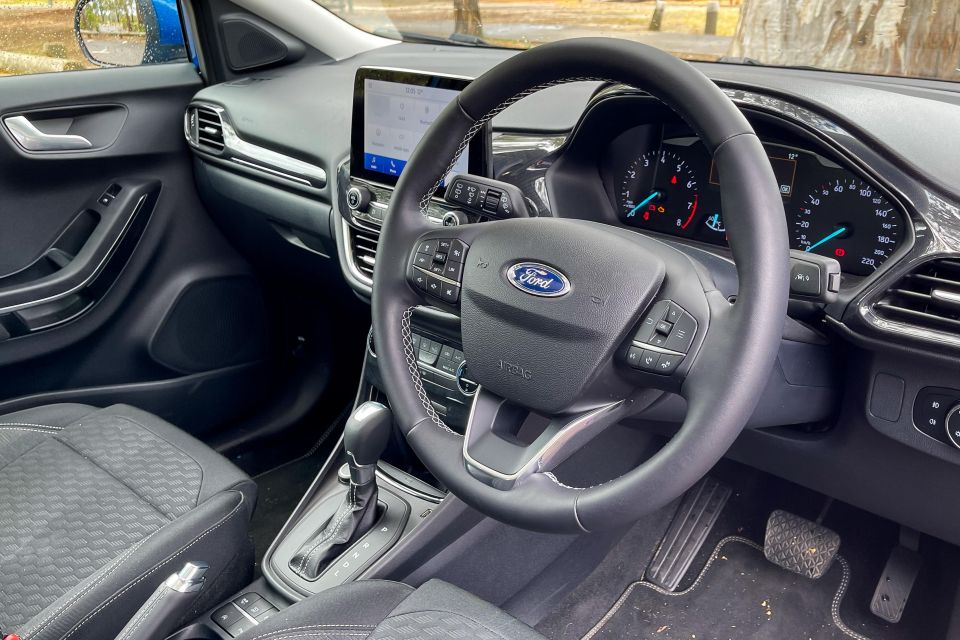
Once you hit the highway, the Puma hunkers down nicely and lends a sense of sure-footedness and solidarity that you might expect of a larger car. The engine may start to run out of puff higher in the rev range, but getting to 100km/h isn’t a challenge at all and once there the dual-clutch transmission settles happily into seventh gear at around 2000rpm.
The adaptive cruise control and lane centring systems fitted to our tester as part of the optional park pack make driving on the highway even easier, essentially offering Level 2 autonomy and an experience akin to much more expensive cars.
Not everyone will like the lane centring function, which at times can feel very assisted, but I personally didn’t find it too intrusive like you might find with some rival brands.
Refinement at speed isn’t quite as good as say, the larger Escape, but it’s again competitive for the segment. You will notice some tyre roar particularly on rougher stretches of bitumen, though.
As noted earlier, the Puma has quick steering and a keen chassis that offers sharp turn-in and a sporty handling feel that’s as close to a warm hatch as you can get in the segment, and it’s quite a bit of fun to steer. It’s a shame the base model doesn’t get paddle shifters like higher grades for added engagement.
I’d go as far to say the Ford Puma is the pick of the mainstream compact crossover segments for the keen driver, though a keen driver is more likely to be buying a similarly-sized hatchback, perhaps a Focus ST-Line for the same money. Choices.

Where expert car reviews meet expert car buying – CarExpert gives you trusted advice, personalised service and real savings on your next new car.
The Puma is covered by a five-year, unlimited-kilometre warranty, including access to the Ford Service Benefits program which includes roadside assistance through complementary auto club membership, satellite navigation map updates, and capped-price servicing.
Scheduled maintenance is required every 12 months or 15,000 kilometres, whichever comes first, with the first four services capped at $299 covering up to 60,000km. Over the life of the program, it’ll cost you $1196 which is pretty competitive against rivals.
It’s worth noting the Puma’s turbocharged petrol engine demands premium unleaded, which will cost you a little more at the pump than the regular unleaded allowed by rivals such as the Mazda CX-3.
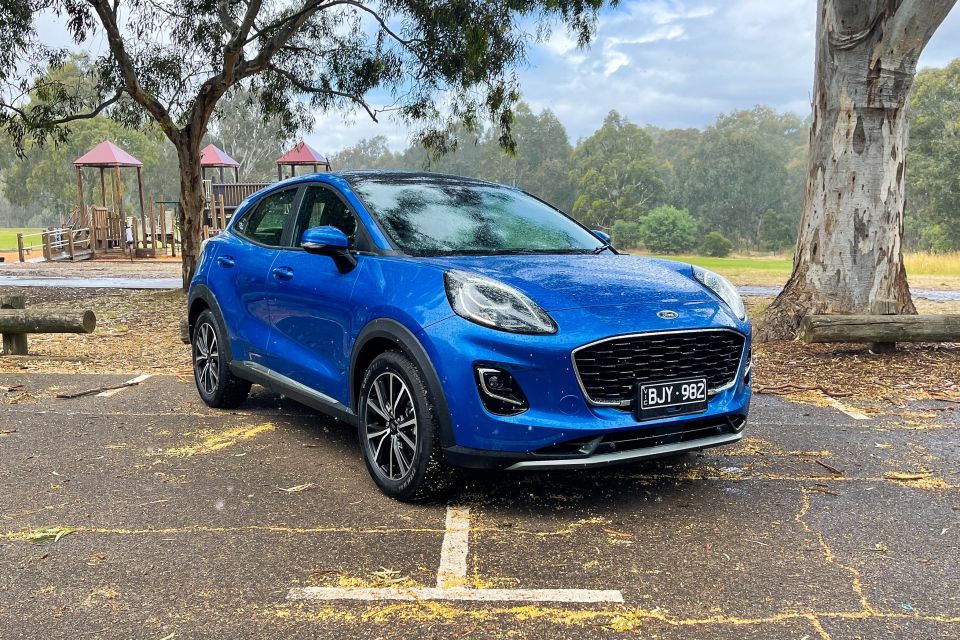
Before the Puma arrived in Australia, Ford had really half-arsed it in the small SUV class with the EcoSport – I did my best not to mention it but I had to.
The Blue Oval has long needed a competitive product in what is the fastest growing vehicle class in Australia, and the Puma is not just good, it’s great.
I’ve said it before and I’ll say it again: all of Ford’s European products (Escape, Focus and Puma) are horrendously under-appreciated in Australia.
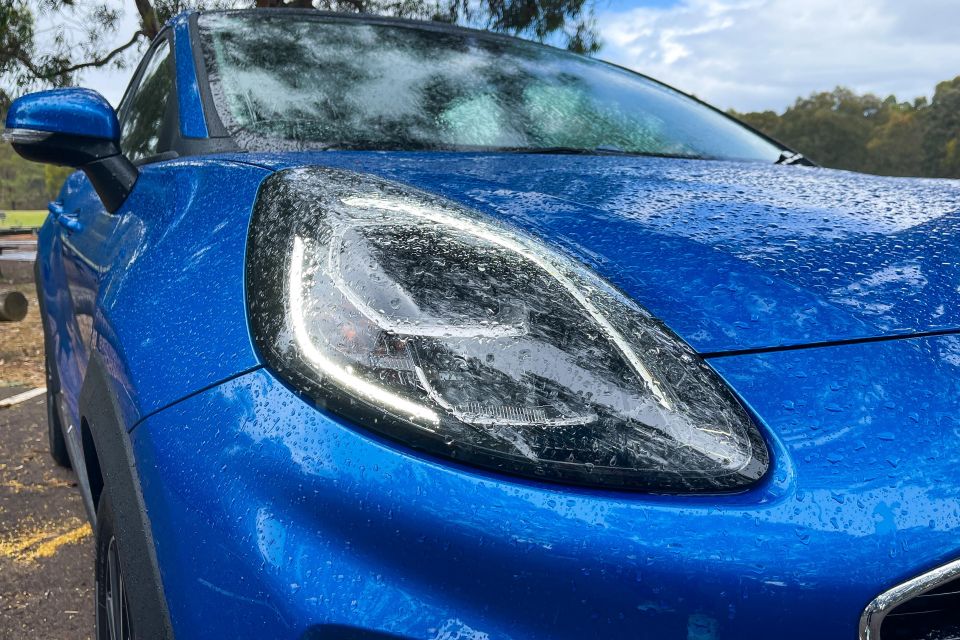
Back home they’re regarded just about as highly as Volkswagen products, whereas here they’re put in the same sentence as some of Holden’s Chevrolet-sourced also-rans.
The Puma really stands out as a fresh and fun option in a segment that’s pretty dry and austere – at least in terms of engine performance and driving dynamics. It’s also pretty decent value so long as you don’t tick too many options.
Personally, I’d recommend this base grade with the Park Pack and a contrasting roof. It gives you all the features you’re ever going to need and looks funky enough to turn heads.
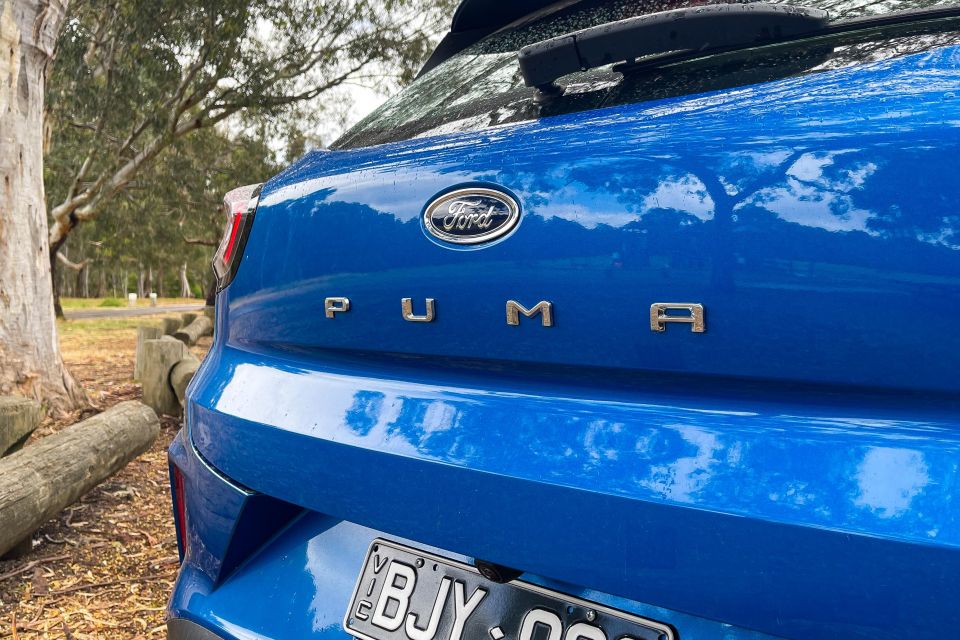
Click the images for the full gallery
MORE: Ford Puma news and reviews MORE: Everything Ford
Where expert car reviews meet expert car buying – CarExpert gives you trusted advice, personalised service and real savings on your next new car.
James is an automotive journalist based in Melbourne, Australia. Before joining CarExpert.com.au in 2020, James has worked at leading auto media outlets including Carsales and CarAdvice, as well as at Pulse agency for Ford Australia's communications team. In 2019 James made Mumbrella's 'Top 20 most prolific web authors in Australia' list after publishing 1,360 articles between March 1, 2018 and February 28, 2019 for CarAdvice. James is also an Ambassador for Drive Against Depression – an Australian charity whose mission is to support mental wellness through the freedom of driving and a shared love of cars.


Max Davies
5 Days Ago


Josh Nevett
4 Days Ago


Andrew Maclean
3 Days Ago


Shane O'Donoghue
3 Days Ago


Anthony Crawford
2 Days Ago
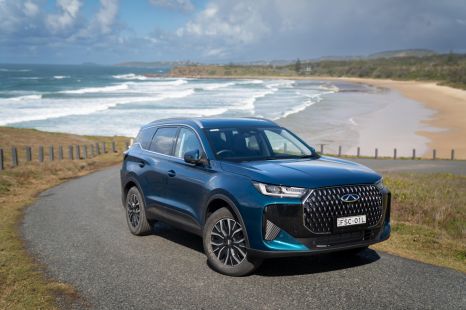

Andrew Maclean
1 Day Ago